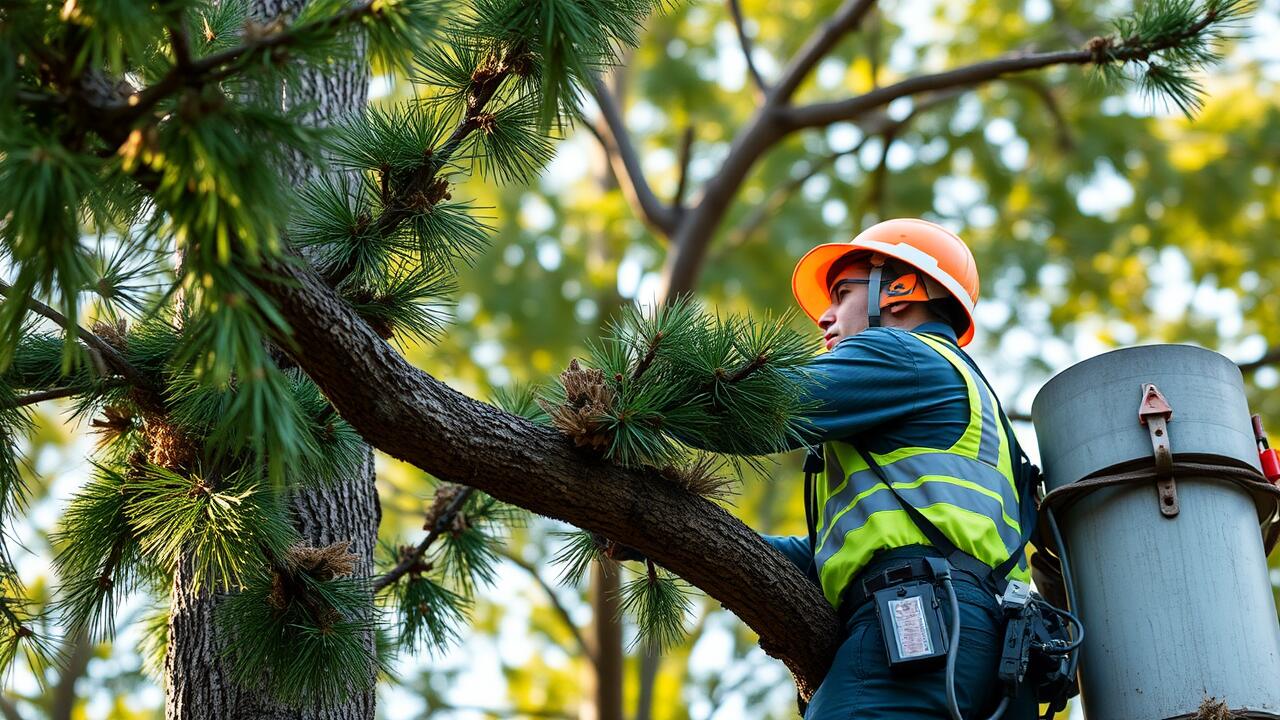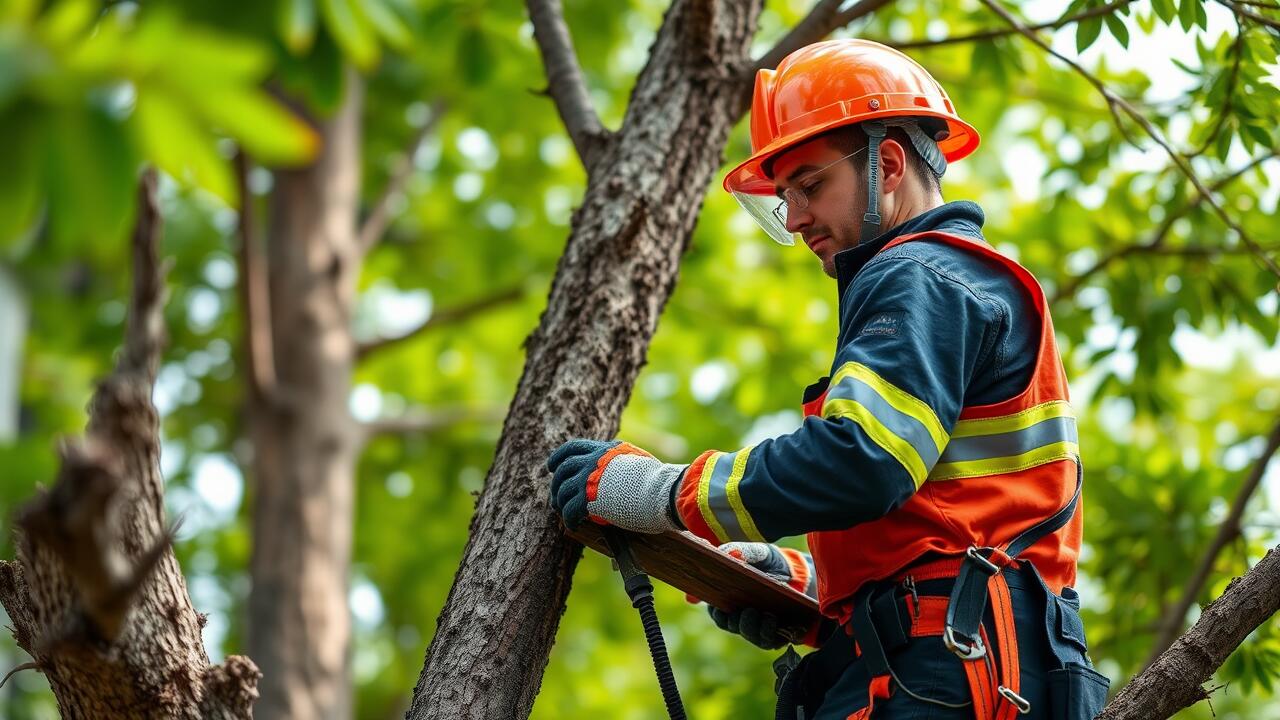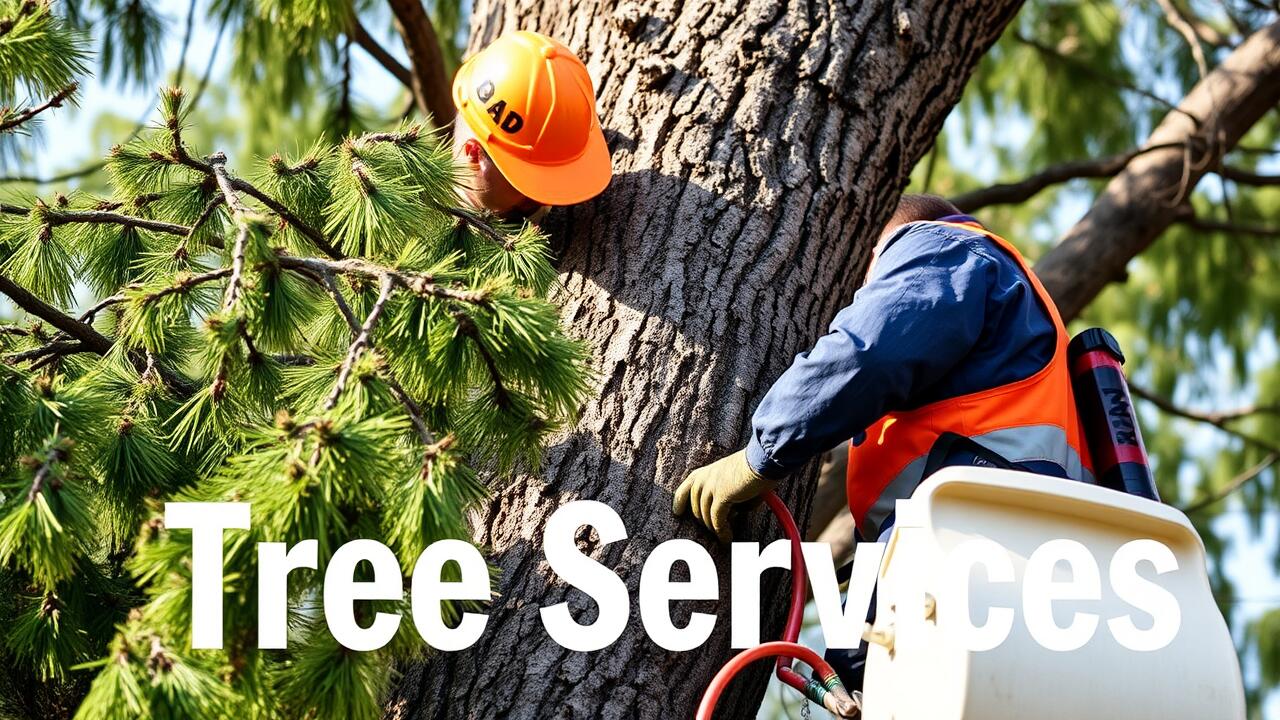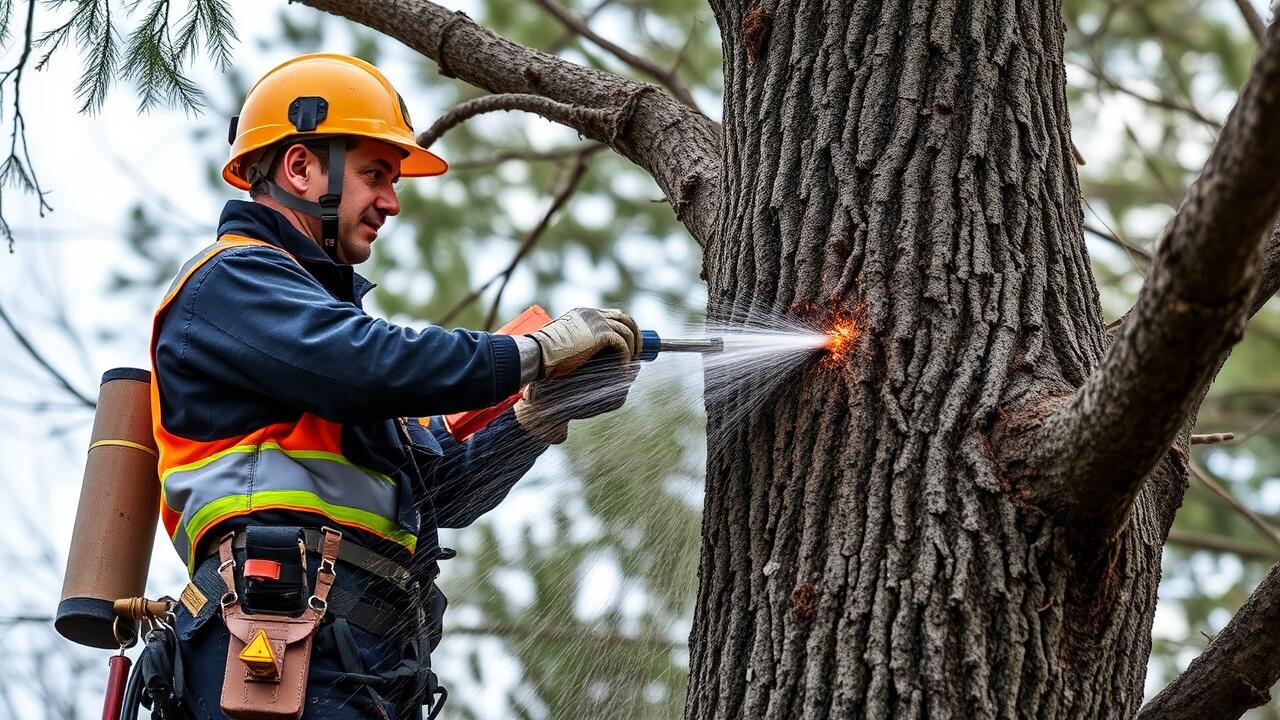
The Tree Bracing Process
Tree bracing is an essential process that aims to provide support to trees that exhibit structural weaknesses. This technique involves the installation of supportive materials that help stabilize the tree without causing harm to its natural growth. Properly executed, bracing can prolong the life of a compromised tree and ensure safety in surrounding areas. Homeowners often rely on experts to determine the need for bracing, especially when living in regions prone to severe weather conditions.
Selecting appropriate materials for the bracing is critical to the success of the operation. Steel cables, braces, and anchors are commonly used, and these should be chosen based on the specific needs of the tree and its environment. Consulting with professionals or emergency specialists, such as those providing Emergency Tree Services Cabbagetown, Atlanta, can help ensure that the materials not only offer support but also blend seamlessly with the tree’s structure. Understanding the balance between support and natural growth is paramount in the bracing process.
Steps Involved in Safely Bracing a Tree
Bracing a tree requires careful planning and execution to ensure the health and safety of the tree. The first step involves assessing the tree's condition and identifying any structural weaknesses. This assessment often includes checking for cracks, significant lean, or decay. After determining the areas that need support, the next step involves selecting appropriate bracing systems that can provide the needed stability without causing further damage. If the tree presents considerable risks, seeking the assistance of specialists like Emergency Tree Services Midtown, Atlanta, is advisable.
Installation of the bracing system comes next, which should be done with precision. Using appropriate tools, the bracing materials must be secured in a way that evenly distributes weight and tension. Straps or cables should be positioned strategically around the tree's trunk and branches to provide support where it is most needed. Regular monitoring is critical, ensuring that the bracing remains effective over time and does not harm the tree's growth. Consulting with experts can provide insights on maintaining the integrity of the bracing system while fostering the tree's overall health.
Selecting the Right Materials for Tree Support
Selecting the appropriate materials for tree support is crucial to ensure the longevity and health of the tree. Commonly used materials include cables, braces, and anchors designed to withstand various weather conditions. Steel cables are often favored for their strength and durability, while synthetic options provide flexibility and resistance to environmental factors such as moisture and UV exposure. Each material has its own advantages, and understanding these can help you make an informed decision that best suits your tree's needs.
When considering the best fit for your specific situation, it's advisable to consult with professionals who specialize in tree care. Emergency Tree Services Kirkwood, Atlanta can offer insights into the right materials based on local climate conditions and tree species. The choice of materials should not only focus on strength but also aim to minimize potential harm to the tree itself. A well-thought-out selection process can significantly contribute to the tree's stability and health over time.
Evaluating Bracing and Cabling Materials
When evaluating bracing and cabling materials, durability and strength are crucial factors to consider. Materials such as steel cables or synthetic ropes are often preferred due to their high tensile strength and resistance to environmental factors. Additionally, it is essential to check for UV resistance if the support system will be exposed to sunlight. Quality hardware components, including brackets and connectors, also contribute to the overall effectiveness of the system. Proper materials ensure that the tree has the best chance of stability and health.
Consulting professionals can provide valuable insights into the most suitable materials for specific tree types and conditions. Emergency Tree Services West End, Atlanta, can assist in selecting the right tools and materials tailored to the unique challenges of each situation. Their expertise not only helps in identifying the best components but also offers reassurance that the installation process will be carried out correctly to minimize risk to both the tree and surrounding structures.
Professional vs. DIY Tree Bracing
When it comes to tree bracing, homeowners often face the choice between professional services and a do-it-yourself approach. Hiring an expert can ensure that the job is done correctly and safely. Professionals have the experience and knowledge to assess the specific needs of a tree. They understand how to mitigate risks associated with improper installation. Emergency Tree Services South Downtown, Atlanta, provides specialized care to ensure the long-term health and stability of trees in the area.
On the other hand, some homeowners prefer to take on the challenge themselves to save on costs or gain a sense of accomplishment. DIY tree bracing can be an uncharted territory for many, leading to frustrations if the proper techniques and materials are not used. Those without experience might overlook signs of tree decay or structural weakness. They risk creating further complications, potentially endangering themselves or others nearby. Thus, weighing these factors can help in deciding the best course of action for tree management.
Pros and Cons of Hiring an Expert
Hiring an expert for tree bracing and cabling offers several advantages. Professionals bring specialized knowledge and experience, which can ensure the job is done safely and effectively. They often possess the necessary tools and access to high-quality materials that may not be readily available to the average homeowner. Moreover, their training can help identify potential issues in advance, reducing the risk of future complications. For residents in need of such services, companies like Emergency Tree Services Buckhead, Atlanta provide reliable assistance.
On the downside, hiring an expert can be more costly than a DIY approach. Homeowners might face a significant financial commitment, especially if multiple trees require attention. Additionally, scheduling a professional can lead to delays, particularly during peak seasons when arborists are in high demand. While expertise is crucial for larger or more complicated situations, some simpler tasks may be manageable for motivated individuals willing to learn the necessary techniques.
FAQS
What is tree bracing and cabling?
Tree bracing and cabling are techniques used to provide structural support to trees that may be at risk of breaking or falling due to weak branches, uneven growth, or external forces like wind.
When should I consider bracing or cabling my tree?
You should consider bracing or cabling your tree if you notice signs of structural weakness, such as large branches that are leaning, cracks in the trunk, or if the tree has an uneven canopy. Consulting with an arborist can help determine if these techniques are necessary.
What materials are commonly used for tree bracing and cabling?
Common materials for bracing and cabling include steel cables, wire rope, brackets, and tree straps. The choice of material depends on the specific needs of the tree and the surrounding environment.
Can I perform tree bracing and cabling myself?
While it is possible to perform tree bracing and cabling as a DIY project, it is recommended to consult with or hire a professional arborist to ensure safety and effectiveness. Proper techniques and materials are crucial for the health of the tree.
What are the benefits of hiring a professional for tree bracing and cabling?
Hiring a professional ensures that the job is done safely and effectively, as they have the experience and knowledge to assess the tree's condition, choose appropriate materials, and properly install the bracing or cabling system. This can help prevent further damage to the tree and reduce risks to surrounding property and people.



